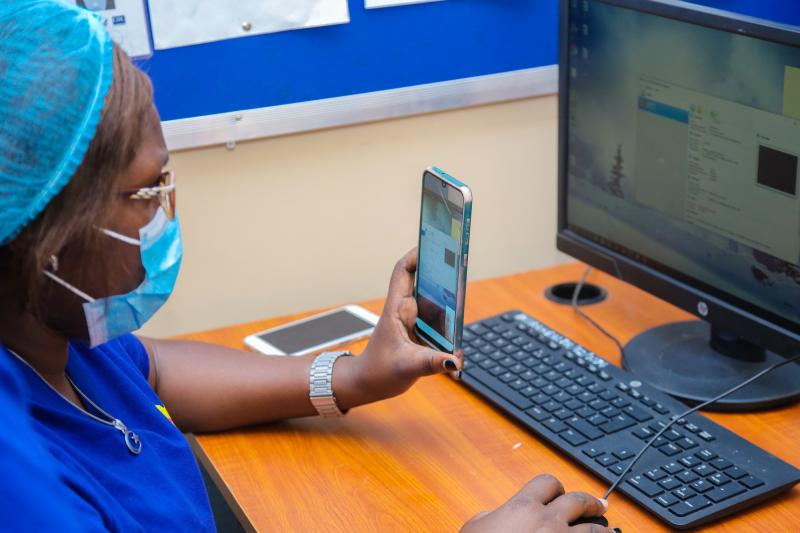Where We Work
See our interactive map


At Sengerema Health Center in Tanzania, Neema Gwidu reviews a patient's information. Photo by Rashid Hamis Kindamba for IntraHealth International
IntraHealth's Amy Finnegan and Olivia Vélez explain how investing in digital public infrastructure like health worker and facility registries can accelerate health tech startups.
Earlier this year, IntraHealth International connected with a company that’s using artificial intelligence (AI) and machine learning to dynamically redistribute the health workforce in Liberia. We quickly got into the weeds—how are you setting it up and how much does it cost? No surprise, it’s like any data science project—80% of the work is wrangling the data. In this case, the firm had to create a list of all the health facilities and the providers working at those facilities and their training and skillset—using available, messy data and at times visiting health facilities to collect data from scratch—before they could even begin to use AI.
Registries are an essential building block of a health information system.
It wasn’t long before we realized the startup had created their own custom health worker and facility registry. What’s a registry? Registries are an essential building block of a health information system. Simply put, they are lists of entities that have been verified with some criteria. However, registries don’t get the attention they deserve. Let’s see how integral they are to the health tech ecosystem in Africa.
Health tech investing in Africa has reached over half a billion dollars in the last 18 months according to a 2023 report from Briter Bridges. Telemedicine companies are leading the pack—and registries are critical to a telemedicine startup in the same way they were critical to the AI company redistributing health workers in Liberia. When a client connects with a health worker virtually, they may need a referral to another provider or to a pharmacy nearby to pick up a prescription. Behind the scenes is a registry of health care providers, pharmacies, and in stock medicines, and if it’s a repeat customer a client registry can help identify existing prescriptions and any interactions.
Just like that, telemedicine has leapfrogged infrastructure barriers to health care access in Africa—but not without registries.
A customized registry could cost between $100-300k.
Like any startup, a telemedicine startup needs to generate revenue quickly with limited funding runways and most startups never get past the early stages if they cannot generate revenue. If there is no national registry, having to create a customized registry could cost between $100-300k and require ongoing maintenance of between $10-40k per month, depending on the scope and scale. If a startup dies, its custom-built registry dies with it.
Established national registries not only reduce the startup costs and barriers to entry but can accelerate the time from startup to revenue generation when companies can pour money into reducing customer acquisition costs (CAC) rather than recreating and updating registries for their own use. A market with an up-to-date and well-maintained health worker, facility, and client registry can lower startup costs and potentially attract new investors to fund innovation in these markets.
Open source global good software is on the shelf and ready to be implemented.
The great thing about registries is that the global health community has produced guidelines for developing and maintaining facility, health worker, and client registries, and open source global good software is on the shelf and ready to be implemented. IntraHealth has developed and maintains three canonical, open source, and standards-based registry tools. iHRIS is a health worker registry that stores information on health workers across a health system, including their demographics, training, and certifications; GOFR, the Global Open Facility Registry, is a tool that allows facility reconciliation and the creation of a master list of facilities; and OpenCR is a privacy preserving client registry tool. At scale, registries built on such open source tools could power tomorrow’s health tech growth in Africa but not without further investment and governance.
Why not develop and maintain registries through a B2B, business-to-business, model? Venture capitalists could consider funding an NGO, or a social enterprise based in a low- or middle-income country, to enter the market and maintain an application programming interface (API) to an up-to-date and well-maintained health worker and facility registry. Startups could pay a fee to the company rather than recreating the list each time, customers could be assured that they are getting referrals to the most qualified individuals, and the government could have access to the data for free.
With national health worker and facility registries, promising health tech innovations we haven’t even thought of yet could have a running start at revenue generation.
Get the latest updates from the blog and eNews




